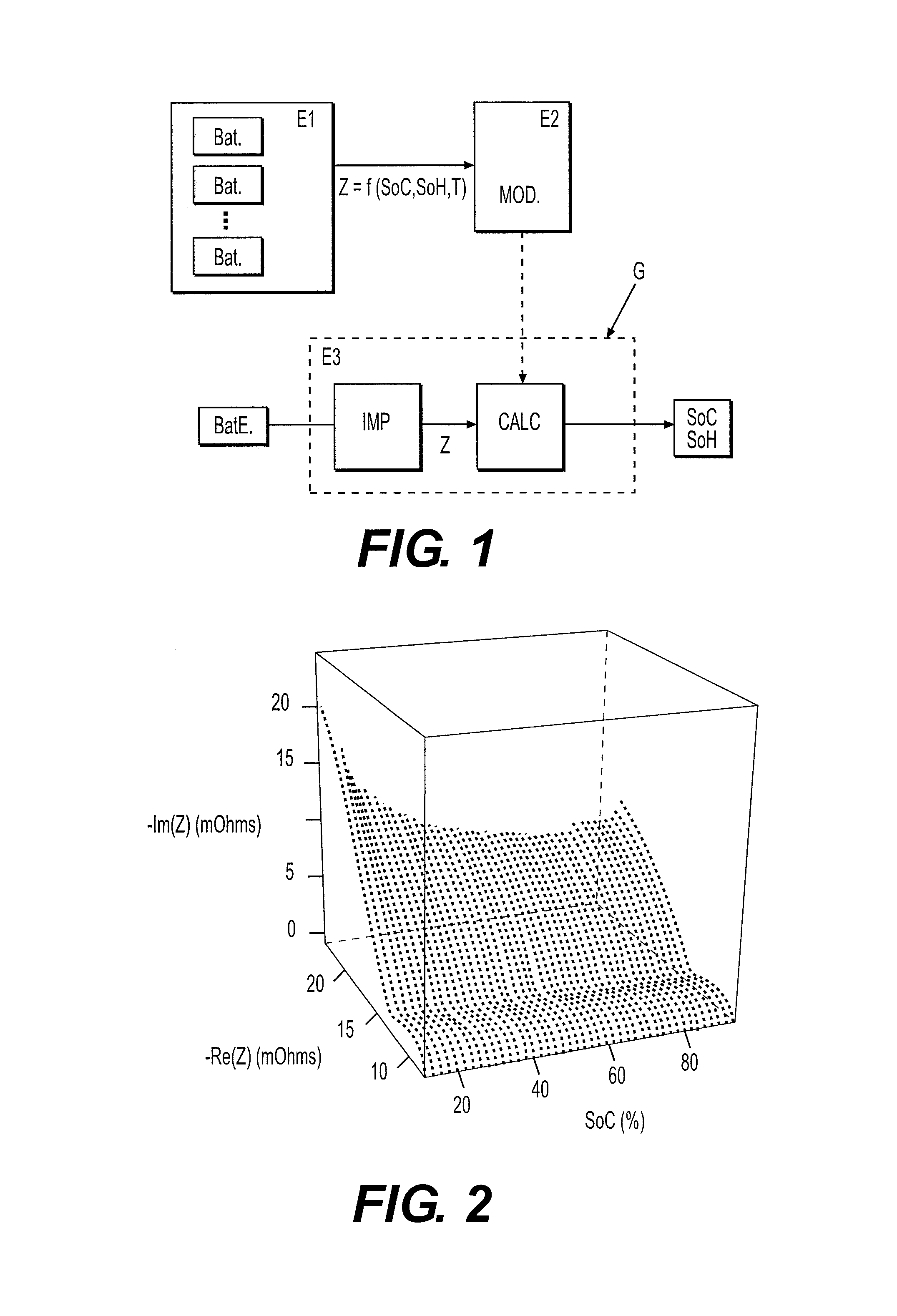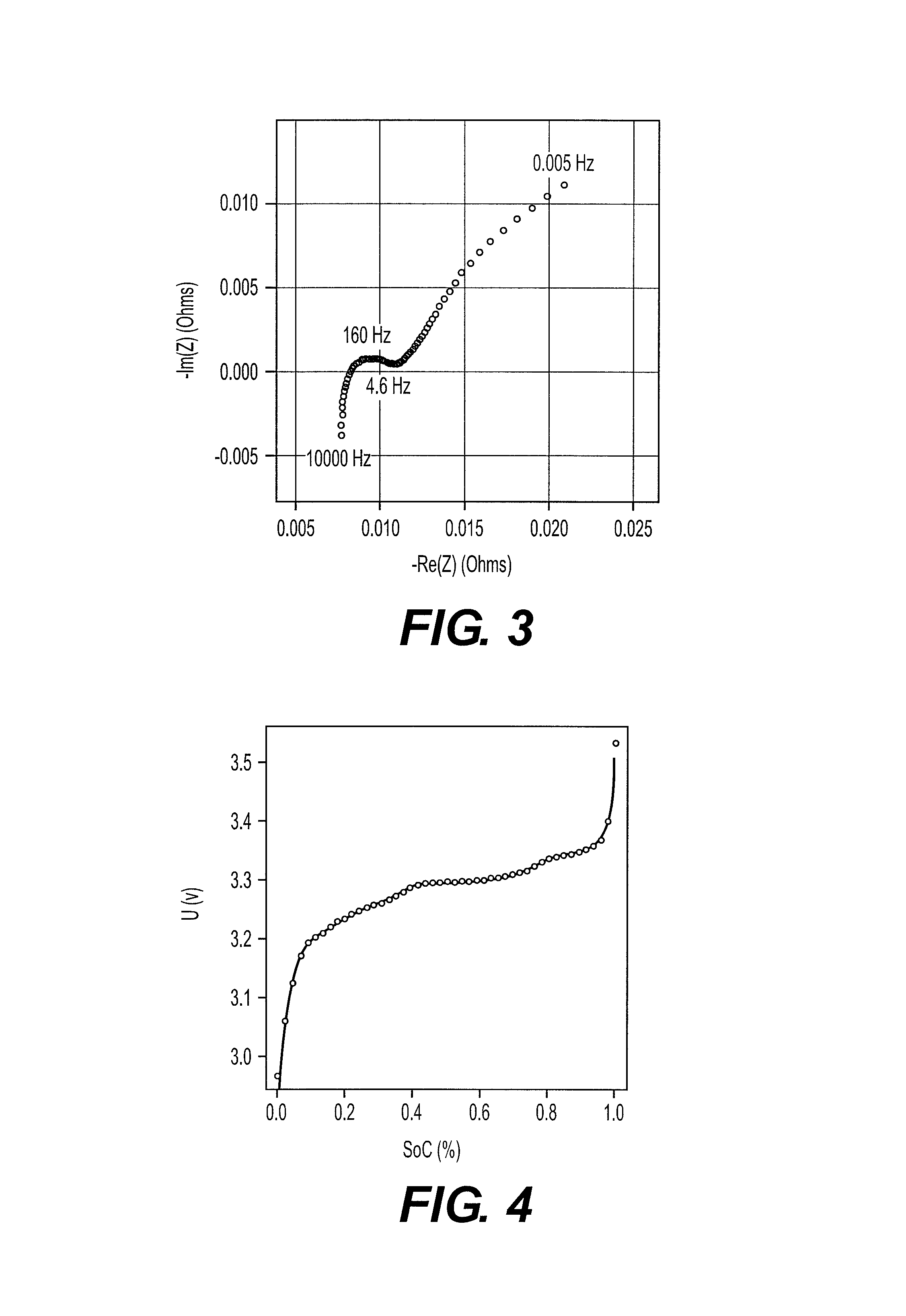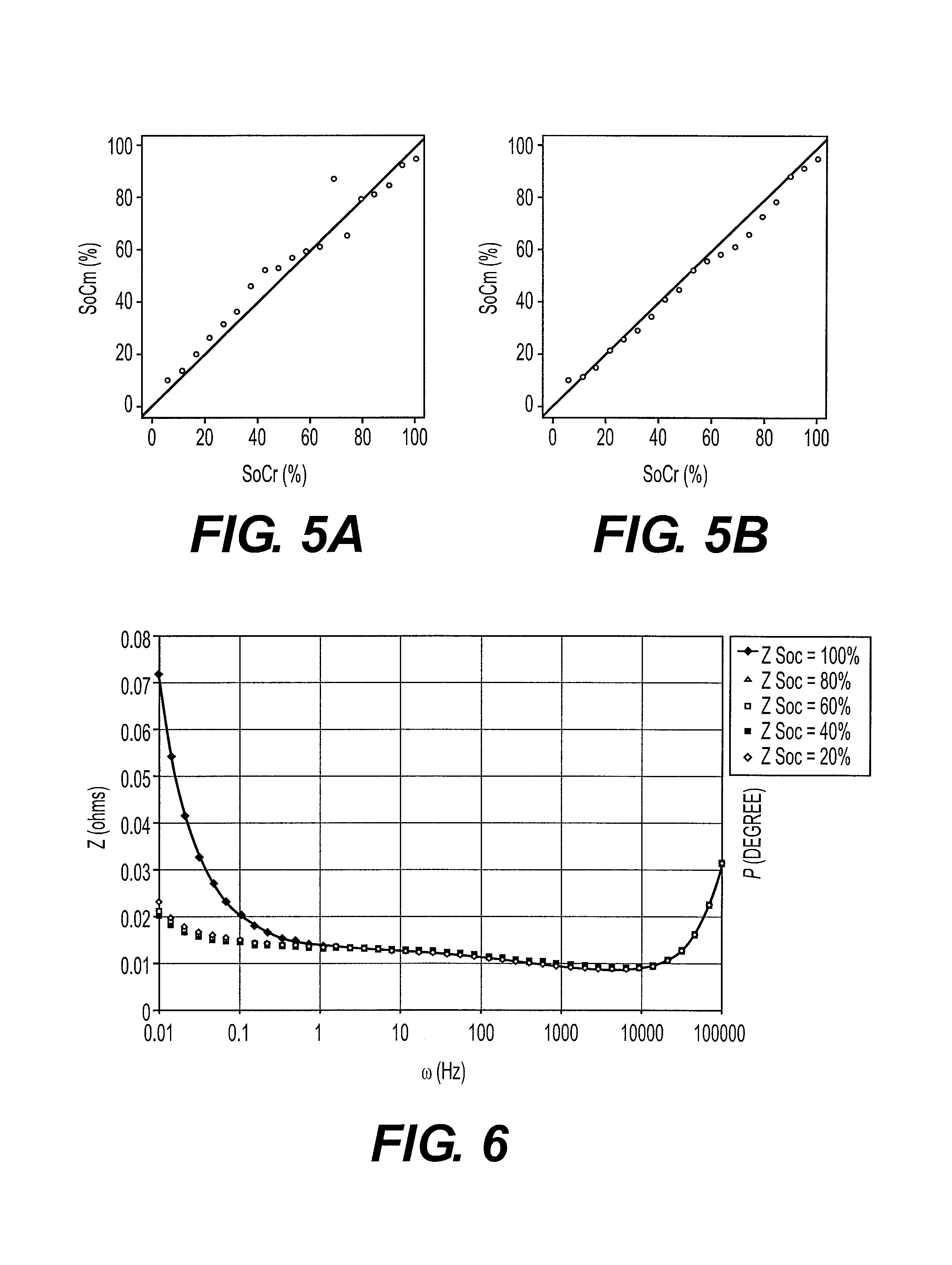In-situ battery diagnosis method using electrochemical impedance spectroscopy
a technology of impedance spectroscopy and in-situ battery, which is applied in the direction of material analysis, speed/acceleration/shock measurement, instruments, etc., can solve the problems of overestimation of the number, difficult to drive, and gradual degradation of the performance of the battery
- Summary
- Abstract
- Description
- Claims
- Application Information
AI Technical Summary
Benefits of technology
Problems solved by technology
Method used
Image
Examples
example 1
Case of an Element of Chemical Composition LFP / C
[0112]Stage 1
[0113]FIG. 6 illustrates a Bode diagram wherein ω represents the frequency in Hz, P represents the phase in degrees and Z represents the electrochemical impedance modulus in Ohms. This diagram allows comparison of the impedances determined for states of charge on a C / LFP type battery. These impedances were obtained using successively sinusoidal signals of different frequencies. The impedances can also be obtained differently, for example by superposing a white noise on the battery charge / discharge signals.
[0114]It should be noted that, in the diagram, the impedances are not superimposed and that they evolve as a function of the charged capacity.
[0115]Stage 2
[0116]These differences are quantified according to the invention by adjusting an impedance model on the curves of the impedance diagram by means of the formula as follows:
[0117]Z(ω,SoC)=a*ⅈ*ω+b+1c1+d1*ⅈ*ωn1+1c2+d2*ⅈ*ωn2
where a, b, c1, d1, n1, c2, d2 and n2 are paramet...
example 2
Case of an Element of Chemical Composition NCO / C
[0124]This new example allows testing the robustness of the method according to the invention for various battery technologies. The impedance diagram (Nyquist diagram) with 50% SoC of the NCO / C technology is shown in FIG. 9. The shape of this curve suggests the convolution of 3 semi-circles, which allows defining the model as follows:
[0125]Z(ω,SoC)=a*ⅈ*ω+b+1c1+d1*ⅈ*ωn1+1c2+d2*ⅈ*ωn2+1c3+d3*ⅈ*ωn3
where a, b, c1, d1, n1, c2, d2, n2, c3, d3 and n3 are parameters to be adjusted according to the experimental values.
[0126]By proceeding as in the previous example, this model is adjusted on the impedance diagrams as a function of the frequency, the state of charge and the temperature, and leads to an impedance model as a function of the SoC, the temperature and the frequency.
[0127]Using another element of identical chemical composition, of known SoC, and the previous model, it is possible to calculate the SoC of this element from a determinatio...
PUM
 Login to View More
Login to View More Abstract
Description
Claims
Application Information
 Login to View More
Login to View More - R&D
- Intellectual Property
- Life Sciences
- Materials
- Tech Scout
- Unparalleled Data Quality
- Higher Quality Content
- 60% Fewer Hallucinations
Browse by: Latest US Patents, China's latest patents, Technical Efficacy Thesaurus, Application Domain, Technology Topic, Popular Technical Reports.
© 2025 PatSnap. All rights reserved.Legal|Privacy policy|Modern Slavery Act Transparency Statement|Sitemap|About US| Contact US: help@patsnap.com



